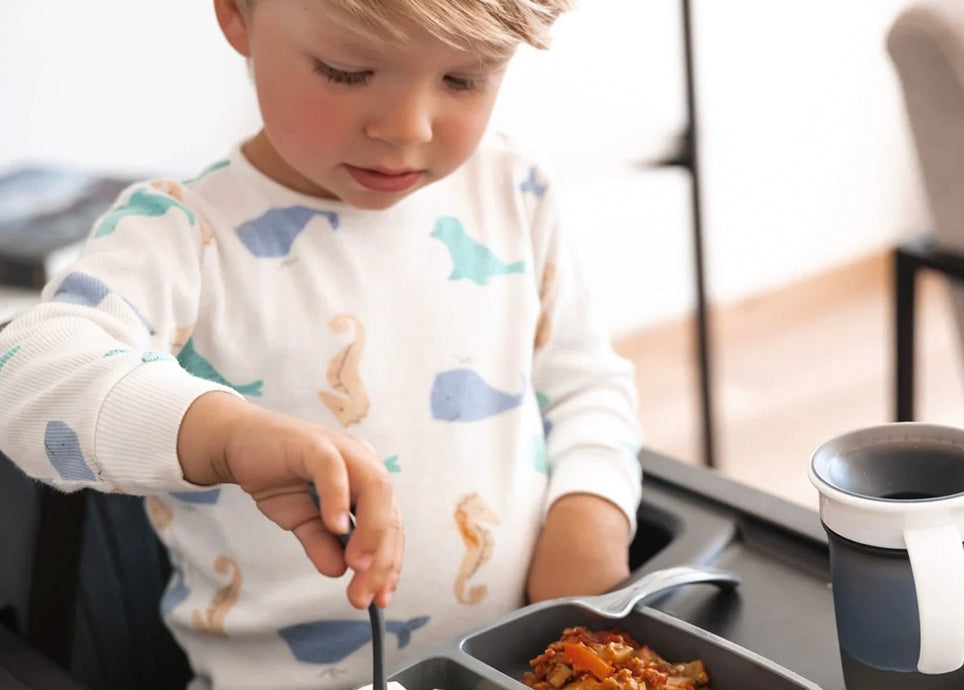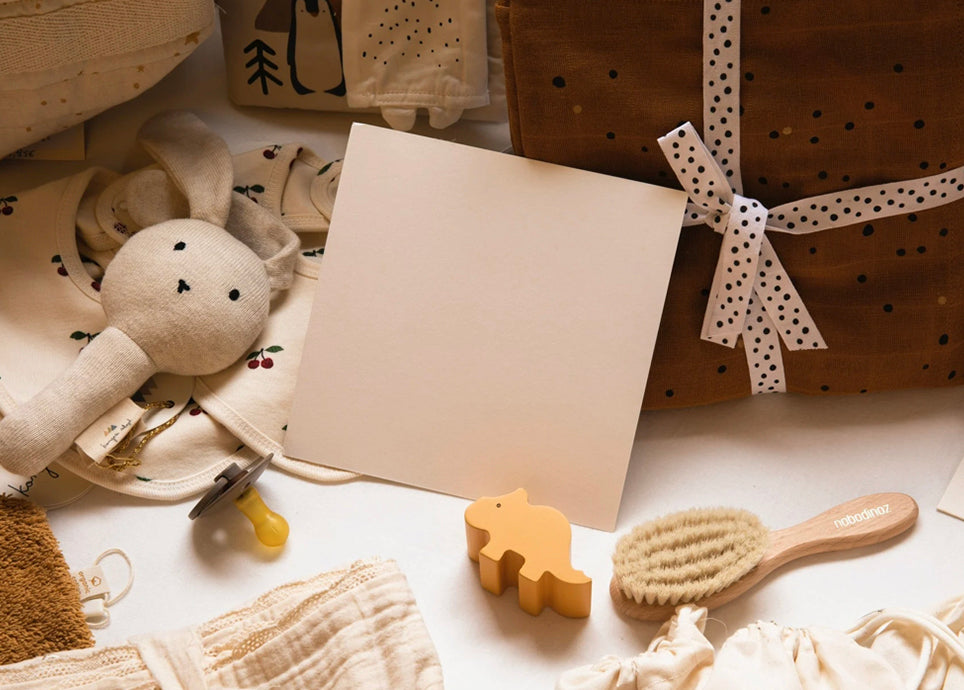Spise med børn
At spise med børn er ikke let. De spiser ofte ikke deres tallerken tom, spilder meget, klager over, at de ikke kan lide det, eller vil forlade bordet. I denne blog vil der blive delt nogle tips om, hvordan man bedst håndterer børn ved bordet.
Tip 1: Mindre trang, det er muligt
Sørg for, at de forventninger du har til dit barn er realistiske. Børnehavebørn finder det ofte svært at sidde stille i lang tid. De bliver let distraheret. Derudover bliver de hurtigt urolige og stressede, hvis de synes, at måltidet varer for længe eller er kedeligt for dem. Nogle ting vil de (stadig) ikke kunne lide. Så længe du tilbyder dem varieret mad, er det ikke nødvendigt at tvinge dem til at spise noget. Alle børn har nogle dage, hvor de har mindre appetit.
Tip 2: Spis på faste tidspunkter
Det er bedst at spise et måltid tre gange om dagen og derudover have en snack på faste tidspunkter om morgenen og om eftermiddagen. Giv dit barn en portion, som du ved, han/hun kan spise. Lad dit barn bede om mere, hvis han/hun har spist det hele. Forklar dit barn, at han/hun kun må spise på disse tidspunkter og ikke selv må tage snacks. Det kan være praktisk at fastsætte en bestemt tid for varigheden af måltidet. Gør det klart for dit barn, hvor længe der skal spises. Ofte er 20 til 30 minutter nok. Det kan være en hjælp at bruge en (køkken)timer her.
Tip 3: Fortæl bordregler
Forbered dit barn på, at I skal spise, så han/hun får tid til at afslutte det, han/hun er i gang med. Fortæl ved bordet, hvilke regler der er. Begræns dig her til 2 til 3 linjer. Prøv at fortælle reglerne ved at sige, hvad dit barn må gøre, i stedet for hvad det ikke må. For eksempel; 'bliv siddende indtil du må forlade bordet', 'spis med ske eller gaffel' eller 'spis din mund tom før du begynder at tale'. Du kan vælge, at dit barn med tiden selv lærer at remse reglerne op. Bestem på forhånd, hvordan du vil reagere på uønsket opførsel. Fortæl dit barn, hvad der sker, hvis han/hun ikke overholder reglerne.
Tip 4: Beløn dit barn
Hvis dit barn overholder reglerne godt, kan du måske finde det behageligt at belønne ham/hende ekstra for det. Fortæl dit barn, hvad belønningen er, hvis han/hun overholder reglerne under måltidet. For eksempel: speciel drik eller mad, et spil efter måltidet eller en ekstra historie før sengetid.
Tip 5: Ved bordet når maden er klar
Sørg for at alt er klar, hvad du har brug for, før du fortæller dit barn, at han/hun må komme til bordet. Dermed kan du undgå unødvendig ventetid. Sæt dit barn på hans/hendes stol, når maden er klar. Læg legetøj eller andre ting, der kan distrahere, ud af syne. Sluk for eksempel fjernsynet.
Tip 6: Spørg og fortæl
Ros dit barn, når han/hun spiser pænt og overholder reglerne. Opfordr dit barn til kun at tale, når munden er tom. Prøv at starte en samtale ved for eksempel at spørge til, hvad dit barn har oplevet. Du kan også vælge at fortælle noget om din dag selv. Så lægges der ikke så meget vægt på, om man spiser meget eller lidt, men mere på det hyggelige samvær.
Tip 7: Ignorer små problemer
Små problemer som brok, klager, tøven eller leg med maden er bedst at 'passende ignorere'. Spis roligt videre og kig ikke på dit barn. Fortsæt med dette indtil problemadfærden stopper. Inkluder ham/hende for eksempel igen i samtalen. Vær forberedt på, at adfærden ofte først bliver værre, når du begynder at ignorere. Hvis du først ignorerer din barns opførsel i et stykke tid og derefter reagerer, lærer dit barn, at han skal fortsætte. Der er naturligvis også adfærd, der er svær at ignorere, som at konstant forlade bordet for at tumle med brødre eller søstre, eller at kaste med legetøj. Hvis dette sker, skal du straks fortælle dit barn, at han/hun skal stoppe og fortælle, hvad han/hun skal gøre i stedet.
Tip 8: Stop uønsket adfærd
Sæt dit barn til side, hvis han/hun ikke gør, hvad du beder om, eller igen ikke overholder reglerne. Fortæl dit barn, hvad der gik galt, og hvad konsekvensen heraf er. Sæt dit barn tæt på dig, på en stol. Fortæl dit barn, at han/hun skal være rolig i 2 minutter, før han/hun må forlade stillesiddende sted. Under stillesiddende perioder giver du ikke opmærksomhed til dit barn. Hvis dit barn ikke kan sidde stille, skal du ty til time-out metoden. Dette betyder, at du fjerner dit barn fra situationen, hvor problemet opstod. Formålet med dette er, at dit barn igen kan blive roligt. Tag dit barn med til et uinteressant rum eller værelse og sig, at det skal være stille i 2 minutter. Ros dit barn, så snart han/hun opfører sig godt. Det er meget muligt, at du skal gentage det at sidde stille eller time-out et par gange, før den uønskede adfærd stopper.
Tip 9: Kompliment efter måltidet
Måltidet vil være overstået efter cirka 20 eller 30 minutter, eller endda tidligere, hvis alle er færdige med at spise. Fjern tallerkenerne fra bordet, selvom dit barn endnu ikke er færdig med at spise. Fortæl dit barn efter måltidet, hvad du synes gik godt under måltidet. Ros dit barn og giv den belønning, du har aftalt forud for tiden. Giv ikke mere mad indtil næste måltid. Eller beskriv kort den regel, som dit barn har glemt, og sæt et mål for næste gang. For eksempel: 'I morgen vil vi prøve igen at blive ved bordet'.

















Efterlad en kommentar
Denne side er beskyttet af hCaptcha, og hCaptchas Politik om beskyttelse af persondata og Servicevilkår er gældende.